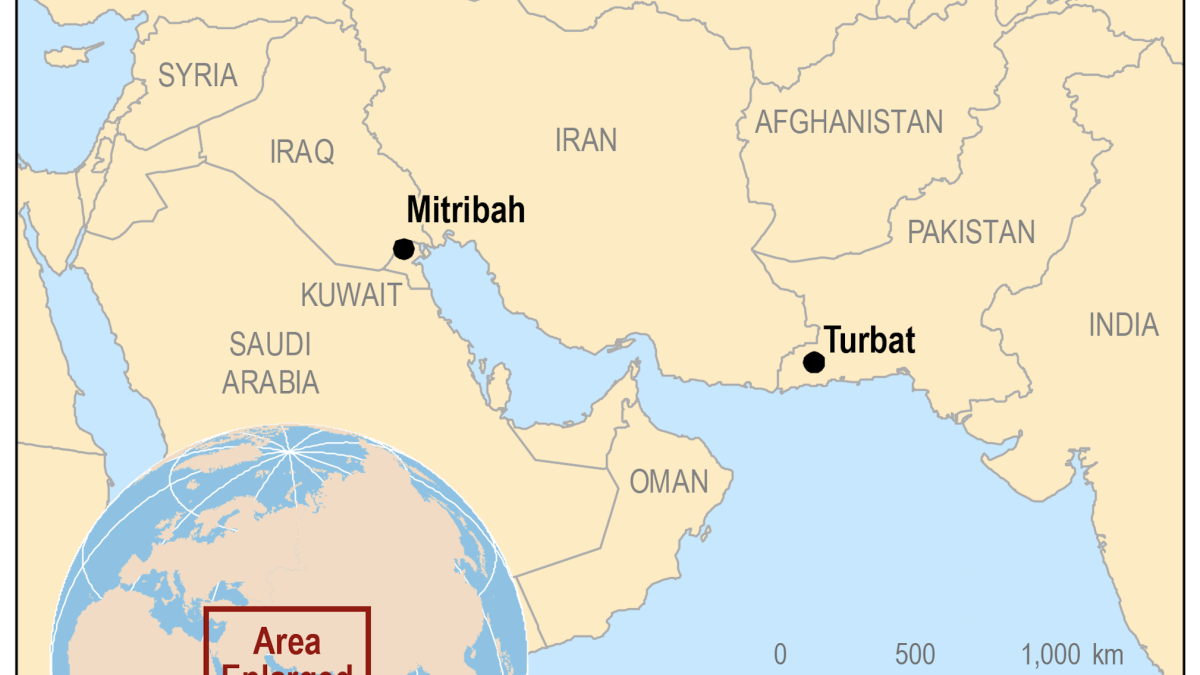The World Meteorological Organization (WMO) has officially evaluated temperature record extremes of 54.0 C (129.2 F) at two locations, one in Mitribah, Kuwait, on July 21, 2016, and a second in Turbat, Pakistan, on May 28, 2017.
In its most intensive evaluation ever undertaken, the WMO World Weather and Climate Extremes Archive has verified the Mitribah observation as 53.9 C (± 0.1 C margin of uncertainty) and the Turbat temperature as 53.7 C (± 0.4 C).
The Mitribah temperature is now accepted by the WMO as the highest temperature ever recorded for the continental region of Asia and the two observations are the third (tied within uncertainty limits) and fourth highest WMO-recognized temperature extremes. Significantly, they are the highest, officially recognized temperatures to have been recorded in the last 76 years.
Full details of the assessment are given in the online issue of the International Journal of Climatology published on June 17.
“This investigation highlights the fact that we can now conduct extremely in-depth analyses of weather extremes,” said Randy Cerveny, chief rapporteur of climate and weather extremes for WMO and a President’s Professor in the School of Geographical Sciences and Urban Planning at Arizona State University. “Rigorous investigations such as this independent temperature sensor calibration give us much higher confidence in our existing climate records and consequently provide a solid basis for examining records being broken around the world, and for studies of attribution of extremes due to climate change.
“The end result adds to our existing archive of global, hemispheric and continental temperature extremes,” Cerveny added. “This database provides a critical information source for understanding how extreme the climate and weather of our planet can be, and when and where it occurs.”
The WMO World Weather and Climate Extremes Archive includes the world’s highest and lowest temperatures, rainfall, heaviest hailstone, longest dry period, maximum gust of wind, as well as hemispheric weather and climate extremes.
According to the Weather and Climate Extremes Archive, the hottest temperature ever recorded was 56.7 C (134 F) at Furnace Creek in Death Valley, California, on July 10, 1913. The highest temperature for the Eastern hemisphere was set in July 1931 in Kebili, Tunisia, at 55 C (131 F). Some weather historians have questioned the accuracy of older temperature records. The WMO World Weather and Climate Extremes Archive is always willing to investigate any past extreme record when new credible evidence is presented.
The new evaluation is unique in that the committee recommended that both sensors be independently calibrated and simultaneously compared to ensure that the data were as accurately obtained as possible. This additional request had never been made in prior WMO evaluations of a record weather observation. It sets a new and higher standard of validity than any previously accepted extreme.
The investigating committee was composed of metrology (instrument) and climate experts from Italy, Kuwait, Pakistan, Saudi Arabia, France, Spain, Morocco, Armenia, Iran, Australia, the United States and the United Kingdom.
More Science and technology

ASU professor wins NIH Director’s New Innovator Award for research linking gene function to brain structure
Life experiences alter us in many ways, including how we act and our mental and physical health. What we go through can even change how our genes work, how the instructions coded into our DNA are…

ASU postdoctoral researcher leads initiative to support graduate student mental health
Olivia Davis had firsthand experience with anxiety and OCD before she entered grad school. Then, during the pandemic and as a result of the growing pressures of the graduate school environment, she…

ASU graduate student researching interplay between family dynamics, ADHD
The symptoms of attention deficit hyperactivity disorder (ADHD) — which include daydreaming, making careless mistakes or taking risks, having a hard time resisting temptation, difficulty getting…
